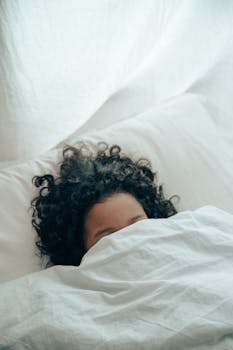
The Silent Thief: Unmasking the World of Sleep Disorders
Sleep. That seemingly simple act is the cornerstone of our physical and mental well-being. Yet, for millions worldwide, sleep is anything but restful. The silent thief of productivity, mood, and health, sleep disorders are far more prevalent than many realize, impacting every aspect of our lives from work performance to our relationships. This article delves into the fascinating, and often frustrating, world of sleep disorders, exploring their causes, symptoms, and importantly, the available treatments.
We often hear about insomnia, the inability to fall asleep or stay asleep. But the realm of sleep disorders extends far beyond this common complaint. Consider narcolepsy, a neurological disorder characterized by excessive daytime sleepiness and sudden, irresistible sleep attacks. Imagine the challenges – falling asleep mid-conversation, during a crucial meeting, or even while driving. The consequences can be devastating.
Another significant disorder is sleep apnea, a condition where breathing repeatedly stops and starts during sleep. This can lead to fragmented sleep, resulting in daytime fatigue, headaches, and even serious health problems like high blood pressure and heart disease. The most common type, obstructive sleep apnea, occurs when the airway becomes blocked during sleep, often due to factors like obesity or anatomical abnormalities. Central sleep apnea, on the other hand, is caused by the brain failing to send the correct signals to the muscles that control breathing.
Restless legs syndrome (RLS) presents a different challenge. This neurological disorder causes an overwhelming urge to move the legs, often accompanied by uncomfortable sensations. This constant need to move can significantly disrupt sleep, leaving sufferers exhausted and irritable. The exact cause of RLS is unknown, but it's often linked to iron deficiency, pregnancy, and certain medical conditions.
Beyond these common disorders, a range of other sleep problems exist. Periodic limb movement disorder (PLMD) involves repetitive leg movements during sleep, often unnoticed by the sufferer but detectable through sleep studies. Rapid eye movement (REM) sleep behavior disorder (RBD) results in acting out dreams, potentially causing injury to oneself or others. Insomnia, while often considered a stand-alone disorder, can also be a symptom of underlying medical or psychological issues.
The Ripple Effect: How Sleep Disorders Impact Our Lives
The consequences of untreated sleep disorders are far-reaching. Chronic sleep deprivation weakens the immune system, increasing susceptibility to illness. Cognitive functions suffer, impacting memory, concentration, and decision-making. Mood disorders, such as depression and anxiety, are strongly linked to sleep disturbances. Driving while sleep-deprived significantly increases the risk of accidents. In essence, poor sleep undermines nearly every aspect of our well-being.
Diagnosis and Treatment: Finding the Path to Restful Sleep
Diagnosing a sleep disorder often involves a thorough medical history, physical examination, and a sleep study (polysomnography). This test monitors brain waves, heart rate, breathing, and other physiological functions during sleep, identifying the specific type and severity of the disorder.
Treatment options vary depending on the specific condition. For insomnia, cognitive behavioral therapy for insomnia (CBT-I) is often recommended, focusing on identifying and changing negative thoughts and behaviors that contribute to sleep problems. Medication may also be prescribed in some cases. Sleep apnea is frequently treated with continuous positive airway pressure (CPAP) therapy, a device that delivers pressurized air through a mask, keeping the airway open during sleep. Other treatments may include oral appliances or surgery. Restless legs syndrome may be managed with medication, lifestyle changes such as regular exercise and improved iron intake, and sometimes nerve stimulation.
Lifestyle Changes: The Foundation of Better Sleep
Even without a diagnosed sleep disorder, incorporating healthy sleep hygiene practices can significantly improve sleep quality. This includes establishing a regular sleep schedule, creating a relaxing bedtime routine, optimizing your sleep environment (dark, quiet, cool), avoiding caffeine and alcohol before bed, and engaging in regular physical activity.
Seeking Help: You Are Not Alone
If you suspect you may have a sleep disorder, don't hesitate to seek professional help. A sleep specialist can accurately diagnose the problem and recommend appropriate treatment. Remember, you are not alone in your struggle. Millions experience sleep disorders, and effective treatments are available. Taking proactive steps towards better sleep is an investment in your overall health and well-being, leading to a more productive, happier, and healthier life. The journey to restful sleep may require patience and persistence, but the rewards are immeasurable. Don't let the silent thief of sleep steal any more of your precious time and energy. Take action today.
